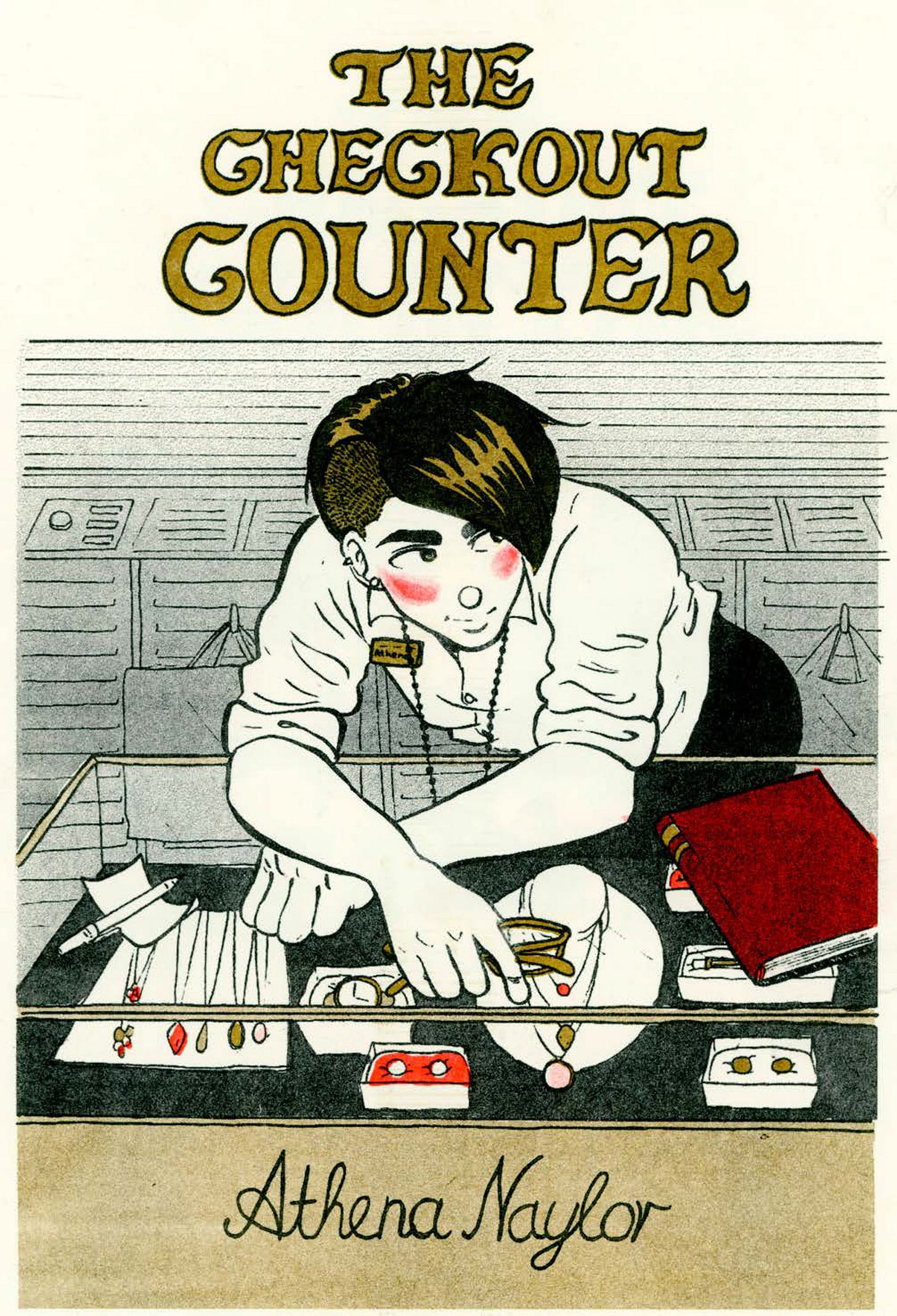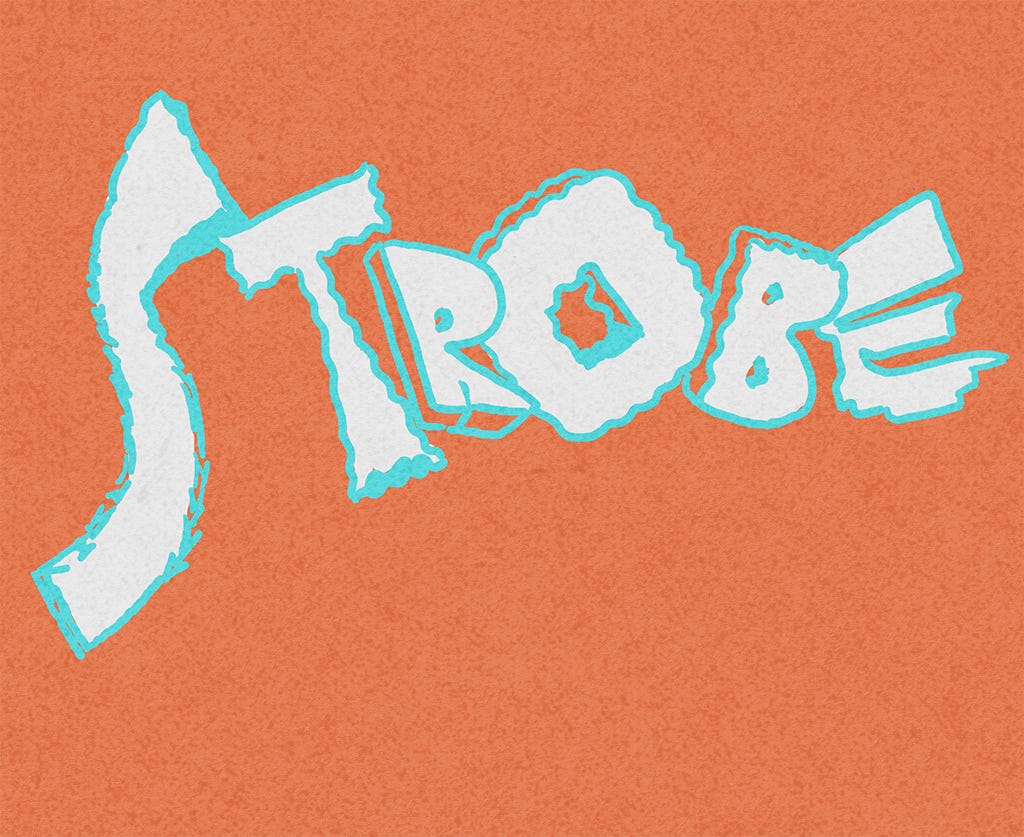Eugene Eyesoak this Friday Night and Featured Cartoonist Athena Naylor
TOMORROW NIGHT!
VIDEO SCREENINGS THIS MARCH
EUGENE EYESOAK
Twisted mystery screening series of animation / cult film
Courtesy Beyond Video (a nonprofit video rental store in Baltimore)
Fridays in March (17th, 24th, 31st)
8pm-midnight + BLACK LIGHT viewing of current Exhibition !
Snacks provided, BYOB! $5 suggested donation
CURRENT EXHIBITION
MEET THE MASCOT
Paintings by Trei Ramsey
BLACK LIGHT viewing every Friday night 8-midnight in March !
Trei Ramsey humorously explores the fictional origin story of the 'unofficial DC Mascot,' The DC Rat, serving as a tongue-in-cheek commentary on what it’s like to be a resident in DC. Ramsey recreates pop culture in his own image and frequently combines his rat motif with various cartooning references as a way to dive into broader conversations about our feelings and experiences as city dwellers.
DWIGHTMESS
Cartooning & Comic Arts
805 Silver Spring Ave.
[entrance on Ripley St]
Silver Spring, MD 20910
FEATURED ARTIST - Athena Naylor
A Chat with Athena Naylor (continued)
DWIGHTMESS: I've always enjoyed your comics for being uncomplicated in their queerness. Meaning, the point-of-view in your stories is definitely you, but it's also your experience of contemporary gay culture and there's also this very distinct connection that you have with others around you that leads to your comics' story subject matter; you pivot between the theoretical and the topical in a way that feels very natural. What is it you feel you're saying about all of these interactions that you're documenting as an autobio cartoonist?
Athena Naylor: Oh wow, thank you! To be honest, I was a little surprised by this question, because my first thought would not be to label my comics as “queer comics,” despite myself identifying as bi and somewhere on the asexual spectrum. I guess I shouldn’t be so surprised; even when I’m not trying to forefront queer themes, they are integral to talking about my day to day life so of course they leak through. To not have those themes in my autobio comics would be inauthentic to my own experience.
I was only somewhat intentional with injecting queerness into my work with my comic “the Checkout Counter.” I remember depicting flirtations with both men and women and being weirdly nervous about it. While I knew I was attracted to multiple genders, I hadn’t been too open about it with others at that point, so I felt that the comic was like… a soft launch of my sexuality to people who might not have known or realized? Which is laughable in retrospect, because I think everyone had been assuming for a long time I was queer anyway. But it was important for me to have that be a low key and natural part of the comic. I didn’t want there to be a discussion about it– it wasn’t the point of the narrative, it was just an unsaid reality of it.
Which is to say, in my work I want queerness to be quotidian. It should be in life, really, but we’re in a political period where it increasingly seems impossible to just be queer and exist without threat or judgment. So when I engage with LGBTQIA culture in my work, I do want it to be very conversational and casual, because that’s how I engage with it in my own life. My queer friendships have been integral to learning more about my own identity.
Personally, I think queerness is a continuing conversation, not a huge and definitive coming out (again, speaking for myself). Documenting interactions I have that speak to queerness feels like the best way to illustrate my relationship to queerness, because I know that relationship and understanding is bound to change over time. For example, I made a daily comic where I talk about asexuality and aromanticism with a friend because that’s been a topic of conversation for us that represents important personal revelations we’re still working through. I think that’s exciting, to be learning new things about yourself and expanding your personal vocabulary. I wish I had seen more people talking about those kinds of less talked about identities when I was growing up so I wouldn’t have felt like such an outlier among my peers.
In the end I think the counterintuitive reality is that the most uncomplicated way to depict queerness is to embrace its complexity/fluidity.
From the DWIGHTMESS STUDIO: STROBE
Nothing Notes: Cartooning typography experiments from errants scraps of paper and index cards, refurbished with color and effects.










